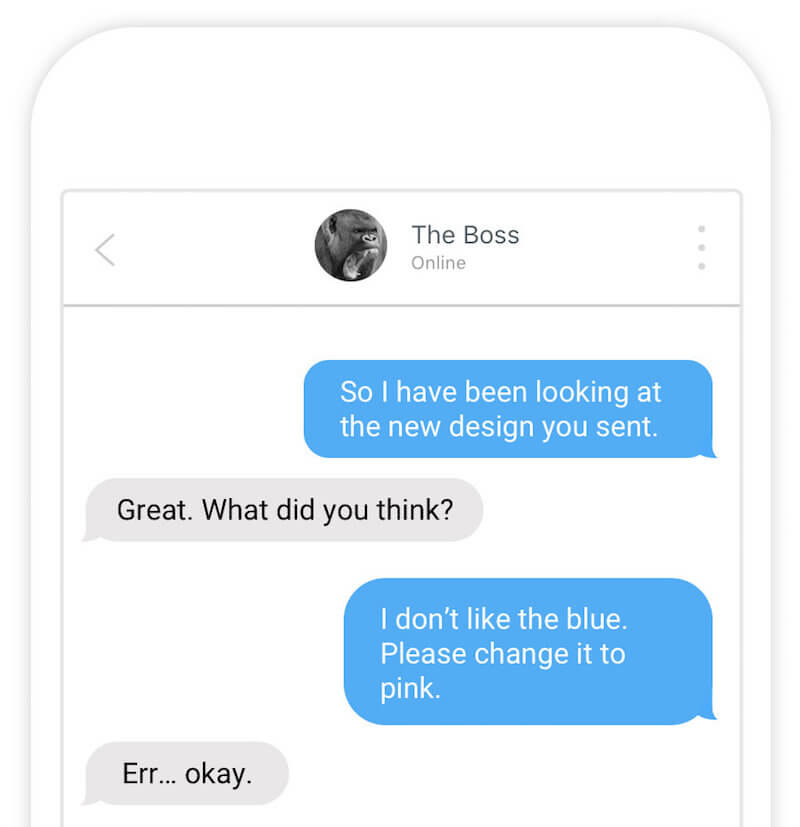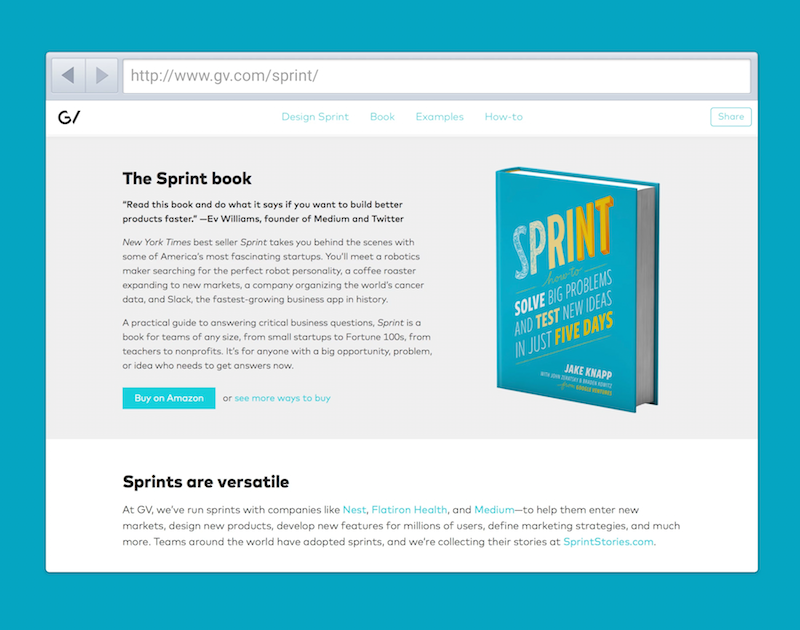Convincing Clients: How To Get Sign Off When It Matters
We have all been there. That dreaded moment when after weeks of work we have to present our progress to key stakeholders, and they mercilessly tear it apart. It feels inevitable, but usually, we can avoid these situations.
Wouldn’t life be so much easier if we didn’t need to get other people to buy-in to our work? Unfortunately, it doesn’t work that way, especially in digital. What we do involves so many different disciplines working together. We have to get the support of colleagues, stakeholders and management. But, achieving that can be painful, to say the least.
That said, there are things you can do to make life easier. We begin, by planning ahead.
Avoid The Crisis By Preparing The Ground
Often we win or lose the battle for getting approval before we ever present our work. That is why it is so important to start readying the ground as early as possible. That consists of four steps:
- Define roles up front
- Engage and educate often
- Gather your evidence
- Divide and conquer
1. Define Roles Up Front
We tend to presume that stakeholders and clients know what we expect from them. But that is not necessarily the case, especially if they haven’t worked on a similar project before.
Therefore, you will find decision making a lot easier if everybody is clear about their roles as early on in a project as possible.
Focus the client on identifying problems. Problems with meeting the needs of users or fulfilling business goals. Meanwhile, explain it is your job to find solutions. That will discourage comments such as, “Change the blue to pink” and instead encourage comments like, “I am concerned that the pre-teen girl audience won’t respond well to the blue.” That puts you in control of the solution but still makes them feel involved. That leads to a more healthy working relationship.

2. Engage And Educate Often
If you want a client to sign off on your digital direction, you will need to engage them in the process of creation. If somebody is involved in making something, they feel a sense of ownership over the creation. That makes them more likely to approve it and in turn, defend it to others.
Engaging clients in the creation process offers another advantage too. It provides you with an opportunity to educate the stakeholder about the decisions you are making. The better they understand the reasoning behind decisions, the more likely they are to approve them.
Best of all, there are lots of opportunities for engaging clients. You might want to consider a design sprint, run a customer journey mapping workshop or do some collaborative wireframing exercises. In fact, a site like Gamestorming has hundreds of activities you could run with clients to get them engaged.

3. Gather Your Evidence
Before presenting anything to stakeholders, you need to collect evidence to support your approach. Typically you should look for two types of evidence, qualitative and quantitive. In other words, try and gather both hard data and also stories of user experiences.
For quantitive data dive into your analytics, run surveys and carry out un-facilitated usability testing. Take that information, draw out key lessons and display it in an easy to digest way. Do not expect stakeholders to grasp it intuitively.
For qualitative data, interview users, carry out in-field studies and run facilitated usability sessions. Make sure you record these sessions and produce an edited highlight video showing the key lessons you want stakeholders to take away. That might be feature requests, frustrations or obstacles the user expressed.
One reason for this mix is that you will find different stakeholders respond to varying types of evidence. Some react emotionally and so will tend to be influenced by stories of users struggling. Others respond more rationally and will be more affected by the numbers.

4. Divide And Conquer
If you will be presenting to many stakeholders, it is worth speaking to them individually beforehand. That gives you a chance to get them onboard informally before the presentation and avoid some of the challenges around group dynamics.
Often one senior figure can dominate a group discussion. But if you have won over other attendees beforehand, they are more likely to speak up in the meeting and support you.
Also by meeting with people individually, you can tailor how you present your work to the different stakeholders. For example, you could focus on the benefits to that person’s team or even them personally. That means they will go into the meeting much more likely to support your proposal.
But how you present your ideas on the day will still make or break success, no matter how much preparation you do beforehand.
Know The Secrets To Presenting Your Work
Let’s be honest; things can go horribly wrong when you ask for approval. Even if you follow the advice here, there is no guarantee. So when possible, put off asking for sign off for as long as you can. It is amazing just how much you can get done without going to stakeholders for their formal agreement, especially if you have involved them informally along the way.
But eventually, the time will come when you need their official “OK”. When that moment comes, there are three areas you should always cover:
- Excite them about the future
- Justify your approach
- Outline a roadmap for success
1. Excite Them About The Future
We have a tendency to start by providing the background that justifies our approach. But in my experience, a presentation is more compelling when you start by outlining your vision. That is where you show your work. But do so by painting a picture of what that work will ultimately deliver.
For example, if you are presenting a new design or even project plan, don’t focus too much on the thing itself, but instead concentrate on the benefit the thing will bring when you implement it.
Where possible show stakeholders what that future will look like if they proceed. When presenting a design that is easy. But in other situations consider a customer journey map. People are much more excited when they can see something tangible.

2. Justify Your Approach
Once you have outlined your vision, the next step is to justify it. Do this in two ways.
- First, focus on the value of the goal.
What does your vision of the future provide to the business that it needs? For example, if you are proposing that the organisation buys a customer relationship management system with the end goal of better managing customers, you could relate that to the companies desire to increase repeat business. - Second, provide evidence of how your suggested approach will get the organisation to the desired outcome.
For example, how do you know buying a customer relationship management system will help you manage customers better?
3. Outline A Roadmap For Success
With your vision laid out and justified the next step is to explain how you get to the final result. That might be how you will implement the project or build the design. The aim is to give stakeholders an overview of the steps required to make the vision a reality. The steps that they have to approve.
But be careful. Overwhelming stakeholders at this point is easy. If that roadmap includes significant changes or investment, you may find they react negatively. Equally, if it is complex and they don’t fully understand it, then they will be reluctant to commit.
That is why the best approach, once you have laid out the roadmap, is to focus in on the next few steps. Instead of asking them to commit to a significant investment, outline the first action and ask them to agree to that. That might be a discovery phase, building a prototype or running a pilot.
By reducing the commitment, you are reducing the risk. That will make stakeholders much more open to agreeing. It is better to go back to stakeholders seeking approval for small steps than trying to get them to agree to the entire undertaking in one go.
But however well you present, stakeholders will always have questions and feedback. How you deal with these often dictates whether you get final approval or not.
Avoid The Destructive Pitfalls Of Negative Feedback
We now reach the part where preparing the ground pays dividends. Hopefully, they will focus on issues rather than dictating the solution to you. However, sometimes the group will start coming up with ‘fixes’ for issues they identify. If that happens, suggest the issue needs more consideration and offer to go away, research solutions, and then feedback. That puts you back in control.
Also, you will have already answered many of the questions in your one-to-one discussions. That and they will understand your approach because some of them at least were involved in its creation.
But you will still get some feedback. The trick is to manage that effectively, and that means structuring the feedback session.
Things can go wrong if you just open up the floor at the end of your presentation for a Q&A time. Instead, I tend to finish a presentation with some questions of my own. I ask whether they feel the project will achieve its desired goals, meet the needs of users and fulfil organisational objectives. That sets the tone for the discussion and focuses everybody on what matters, rather than personal opinion and agendas.

Where possible keep the Q&A time short, suggest that the stakeholders might want to take their time in formulating their feedback and provide it to you individually. That not only stops on-the-fly fixes, it also means you become the person in control. Because all the feedback comes direct to you, rather than the whole group, you are the only one in possession of all the information. That allows you to pick and choose what you listen to and what you ignore.
Part Of A Bigger Picture
Success or failure in getting approval for your ideas is about a lot more than presenting them well. It is about how stakeholders perceive you, what their personal agendas are, the culture of the company and a whole lot besides.
Further Reading
- Creating And Maintaining A Voice Of Customer Program
- Crafting A Killer Brand Identity For A Digital Product
- Why Content Is Such A Fundamental Part Of The Web Design Process
- Practical Steps To Build Transparency In Your Remote Business








